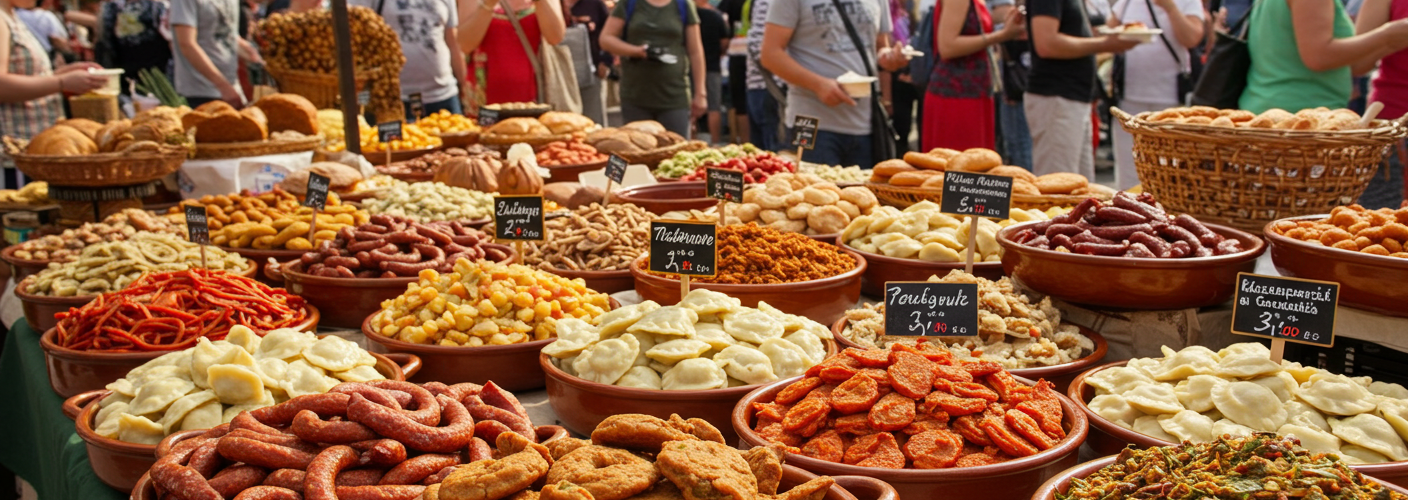Poland is a country rich in history and culture, and its cuisine reflects this diversity. Traditional Polish food is hearty, flavorful, and often made from locally-sourced ingredients. Understanding and experiencing Polish food is essential for anyone looking to immerse themselves in the country’s traditions and hospitality.
One of the cornerstone dishes of Polish cuisine is pierogi. These delicious dumplings can be filled with a variety of ingredients, from sauerkraut and mushrooms to potatoes and cheese, or even sweet fillings like fruit or sweet cheese. Pierogi are typically boiled and then pan-fried in butter, creating a crispy exterior and a soft, comforting interior. They are often served with a dollop of sour cream and are a favorite during family gatherings and festive occasions.
Another iconic dish is bigosh, often referred to as “hunter’s stew.” This hearty meal is made with sauerkraut, fresh cabbage, various meats (usually pork, beef, or sausage), and sometimes even wild mushrooms and spices. It is a perfect representation of Polish culinary tradition, emphasizing slow cooking and the use of ingredients that provide deep and robust flavors. Bigosh is typically prepared in large batches, as it only gets better over time, making it a staple for gatherings and celebrations.
For meat lovers, kielbasa, or Polish sausage, is a must-try. It comes in various forms and flavors, often smoked and seasoned with garlic, marjoram, and other spices. Kielbasa is not just a dish; it’s a part of Polish culture. It can be grilled, fried, or served in stews, and is frequently accompanied by mustard and fresh bread. Some regions have their own unique types of kielbasa, showcasing local flavors and preparation methods.
No exploration of Polish food would be complete without mentioning żurek. This traditional sour rye soup is usually served with sausage and a hard-boiled egg, and is known for its distinct tangy flavor. Żurek is particularly popular during Easter but can be enjoyed year-round. It is a comforting dish that warms the soul, especially during chilly Polish winters.
Desserts also play a significant role in Polish cuisine. One such sweet treat is sernik, a creamy cheesecake made with twaróg, a type of curd cheese, which gives it a unique texture and flavor. Typically baked, sernik can be topped with fruits or chocolate, and is a popular dessert for special occasions. Another favorite is makowiec, a poppy seed roll that can be found in many Polish bakeries. This rich pastry, filled with sweet poppy seed filling, is often enjoyed during the Christmas season.
Polish cuisine is also characterized by its emphasis on seasonal ingredients, fostering a connection with the land. Many dishes utilize root vegetables, cabbage, and grains, reflecting the agricultural history of the region. Moreover, regional variations add a touch of uniqueness to the food, with influences that have evolved over centuries due to geographical locations and historical events.
In conclusion, Polish food offers a delightful array of flavors and dishes that tell a story of tradition, history, and community. Whether you are enjoying pierogi at a family gathering, savoring a bowl of bigosh on a winters’ eve, or indulging in a slice of sernik, you are sure to experience the warmth and hospitality that Polish cuisine has to offer. Exploring these culinary delights is not just about satisfying hunger; it’s about connecting with the heart of Poland itself.




Add comment